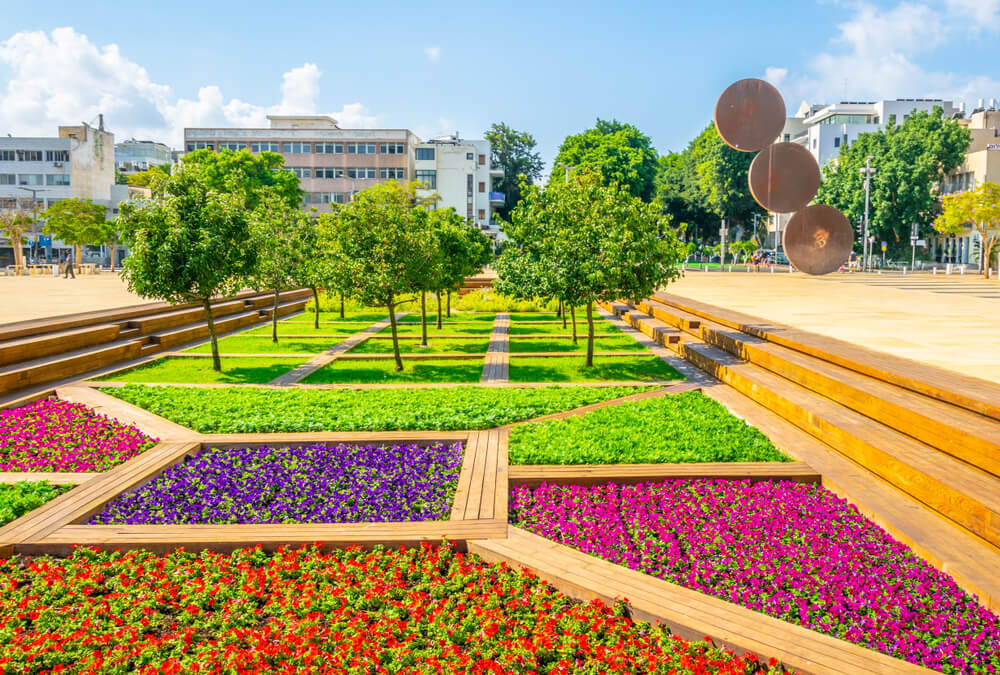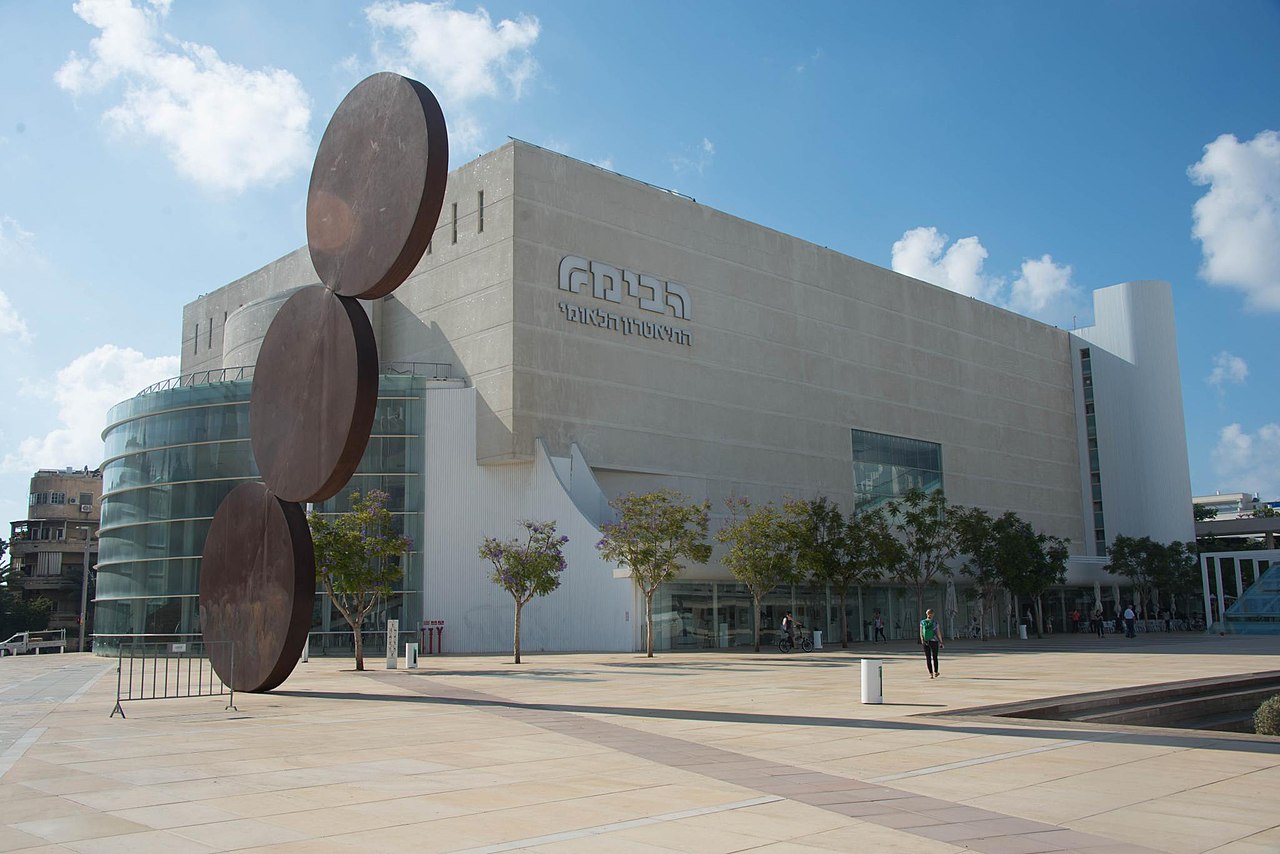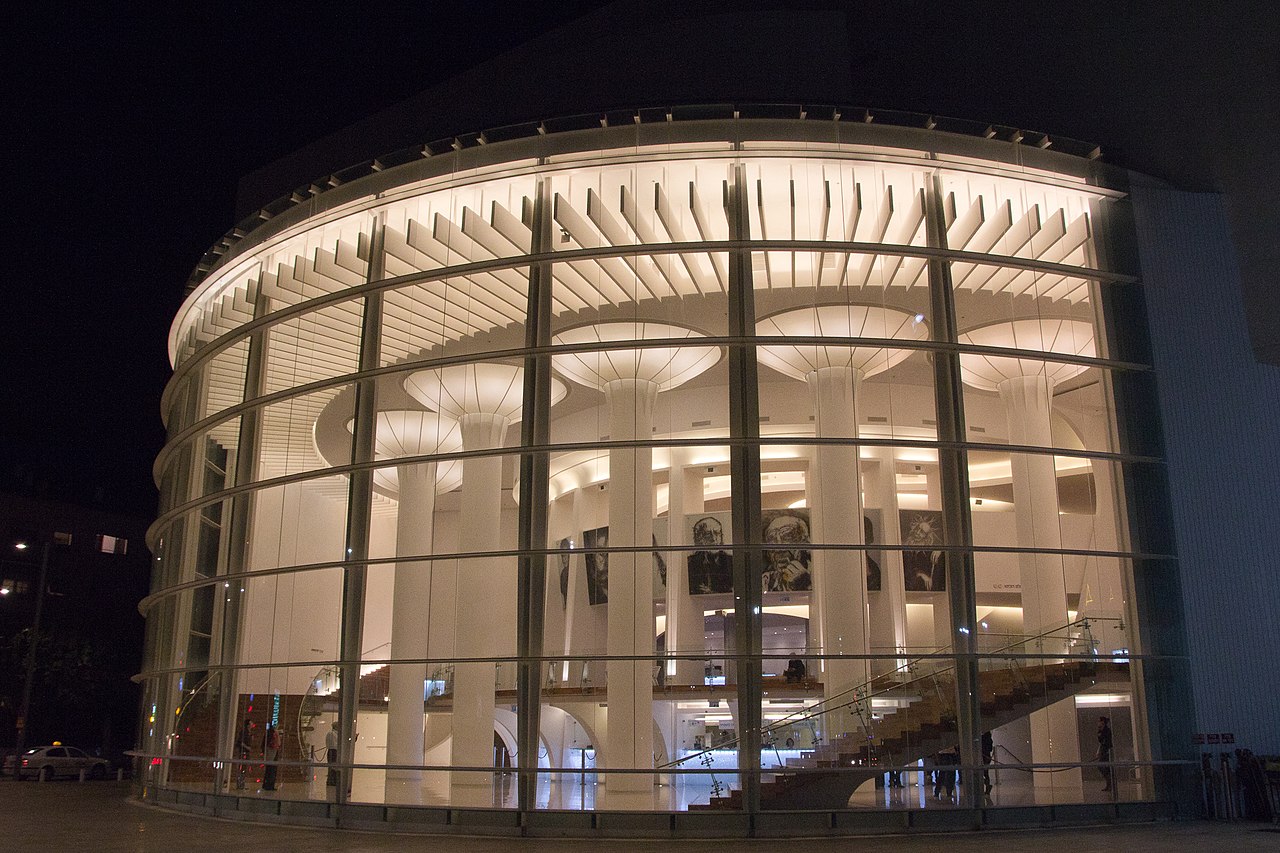Habima Square
Habima Square, located in the heart of Tel Aviv, is a vibrant public space and a true hub of the city’s cultural scene. This spacious plaza is surrounded by some of Tel Aviv’s most iconic venues, including the Habima Theatre, the Helena Rubinstein Pavilion for Contemporary Art, and the Charles Bronfman Auditorium, home to the Israeli Philharmonic Orchestra. In every direction, you’ll find theaters, concert halls, and trendy restaurants, making Habima Square a dynamic gathering place for both locals and visitors. Whether you’re there for a performance, to explore the art, or simply to relax in the beautiful sunken garden with its colorful flowers and trees, Habima Square offers an unforgettable glimpse into Tel Aviv’s creative energy and cultural life.
Plan Your Visit
- Open Times: 24/7
- Prices: Free
- Average Visit Duration: 30 minutes to 1 hour.
- Popular Times: During the evening when shows are about to start or about to finish, the plaza fills with people.
- Special Events: There are often scheduled events in the Square that are advertised in the media.
- Relevant Tours: As one of the most iconic destinations in the city, a walking tour of Tel Aviv will probably include Habima Square. You can also add this attraction to Private Tel Aviv tours.
 Habima Square garden
Habima Square garden
Not only that but the Square is often used as the venue for special events. You’ll find Habima Square at the intersection of Tel Aviv's two most important streets, Dizengoff Street and Rothschild Boulevard. It is a place to meet, to hang out, and to enjoy a relaxed atmosphere.
The Square features a sunken garden where local trees and vegetation have been planted such as lavender, almond trees, and cacti. If you visit Tel Aviv with kids, they can play and you can sit while watching buskers entertain the crowds. Different parts of the Square have different atmospheres, some corners are quiet while other places are dynamic and busy. There is a peaceful water basin, benches, statues, and of course the magnificent architecture that surrounds the Square.
 Habima Theater building, on the western side of the square (Image source: xiquinhosilva CC BY 2.0)
Habima Theater building, on the western side of the square (Image source: xiquinhosilva CC BY 2.0)
You’ll know you’ve reached Habima Square when you see a sculpture of three giant steel discs balancing one on top of the other at an angle, and reaching upwards. This iconic sculpture was created by Menashe Kadishman, and completed in 1976. It was meant to represent the economic instability at the time.
History of Habima Square
The idea for a cultural plaza was part of the original plan for Tel Aviv, laid out by Patrick Geddes in the late 1920s. When the Habima Theater was constructed in the early 1940s, the Square was a natural continuation of the cultural space next to the theater. Slowly other cultural venues were built in the vicinity.
Pro Tip: At the time of writing, parking in the parking lot underneath the Square costs 32 ILS for 2 hours. There is an elevator directly from the parking lot to the Square.
 Habima Square at night (Image source: Oren Rozen CC BY-SA 3.0)
Habima Square at night (Image source: Oren Rozen CC BY-SA 3.0)
Habima Square, as we see it today, was designed by the Israeli artist Dani Karavan and completed in 2010 together with the underground parking. Several of the Square features pay homage to the early landscape of this area, such as the sandboxes where kids play that represent the dunes, and the sunken garden that represents the vegetation that once covered the ground.
Pro Tip: The name Habima means “the stage”, and it is sometimes also called “The Orchestra Plaza”.
Cultural Institutions Around Habima Square
- Habima Theater: Israel’s National Theater
- Cultural Palace (Heichal HaTarbut): Was formerly named Mann Auditorium, and is today known as Charles Bronfman Auditorium. The venue is home to the Philharmonic Orchestra of Israel and is the largest concert hall in Tel Aviv.
- Eyal Ofer Pavilion for Contemporary Art: Formerly the Helena Rubinstein Pavilion for Contemporary Art. One of the most important art museums in the country.
If you’re interested in architecture, and the buildings of Tel Aviv’s White City, then take a look around Habima Square where several of the structures are in the international style.
Cultural attractions nearby include:
- Joseph Bau House Museum, 5min walk
- Tzavta Theater, 6 min walk
- Tel Aviv Cinematheque, 8min walk
- Sarona Center, 11 min walk
- Cameri Theater, 13 min walk
What Happens at Habima Square?
Often nothing happens at Habima Square at all. People come and go crossing the Square to get to where they’re going, locals stop to eat their lunch in the sun and then move on, and theatergoers park their cars in the underground parking beneath the Square then ascend to find their venue.
Over the last few years the plaza has been the focal point for public events such as the housing protest in 2011, the opening ceremony of the 2019 Eurovision, and in 2023-24, tens of thousands of Israelis gathered here to rally for the return of hostages.
 Login / Register
Login / Register
 Contact Us
Contact Us
 Certificate of Excellence
Certificate of Excellence Guaranteed Departure
Guaranteed Departure Low Prices Guaranteed
Low Prices Guaranteed 24/7 Support
24/7 Support




